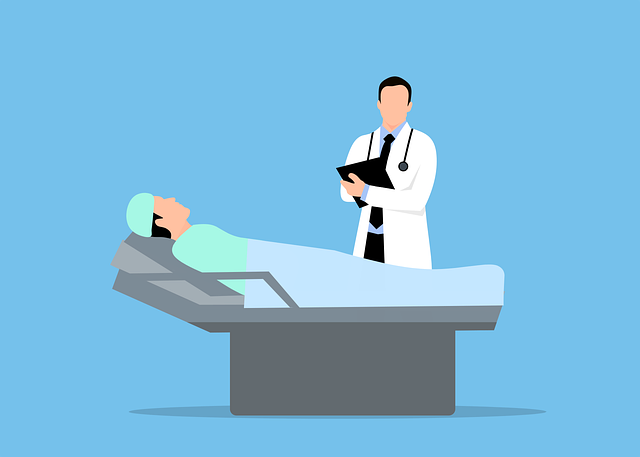Automated patient reminders via SMS, email, and calls are transforming healthcare scheduling by tackling no-shows, improving attendance rates, and enhancing overall efficiency. These methods address various barriers, from scheduling conflicts to anxiety, leading to better medical attendance and improved system performance. Integrating personalized, dynamic reminders with a centralized platform, along with robust technical considerations, ensures effective communication and patient engagement. Continuous improvement through analytics and fine-tuning based on demographics helps healthcare providers optimize their reminder systems, fostering better patient relationships and clinical workflows.
In today’s fast-paced world, patient no-shows at medical appointments are a prevalent issue, impacting healthcare providers and patients alike. To combat this, automated patient reminders through SMS, email, or calls have emerged as an effective solution. This article delves into the strategies these reminders employ to reduce no-shows and improve attendance rates. By exploring the benefits of automated systems, content personalization, technical implementations, and continuous improvement, we uncover a powerful tool for healthcare optimization.
- Understanding Patient No-Shows and Their Impact
- The Role of Automated Reminders in Reducing No-Shows
- Effective Delivery Methods: SMS, Email, and Calls
- Designing Compelling and Personalized Reminder Content
- Implementing an Automated System: Technical Considerations
- Measuring Success and Continuously Improving Attendance Rates
Understanding Patient No-Shows and Their Impact

Patient no-shows, or missed appointments, are a common challenge in healthcare settings, leading to significant impacts on both individual patients and the broader healthcare system. Understanding the causes behind these no-shows is crucial for implementing effective solutions. Many factors contribute to patients failing to attend their scheduled appointments, including scheduling conflicts, transportation issues, lack of motivation, and even fear or anxiety associated with medical procedures. These instances result in wasted resources, overbooked schedules, and potential health risks for both patients and healthcare providers.
Automated patient reminders have emerged as powerful tools in the fight against no-shows. By leveraging SMS, email, and call notifications, these reminders can effectively reach patients, increasing the likelihood of attendance. This strategy addresses various barriers to attendance by providing timely alerts, offering convenience through multiple communication channels, and fostering a sense of accountability among patients. As healthcare providers integrate automated reminder systems into their practices, they can expect to see improvements in medical attendance boost, reduced no-show prevention tools, and overall efficiency in healthcare scheduling reminders.
The Role of Automated Reminders in Reducing No-Shows

Automated patient reminders have emerged as a powerful tool to combat no-shows and enhance overall attendance rates in healthcare settings. By leveraging technology, these automated reminders take the burden off healthcare providers and staff who often rely on manual approaches that can be time-consuming and error-prone. SMS, email, or call reminders serve as gentle nudges, reminding patients of their upcoming appointments well in advance. This proactive strategy not only helps patients remember their commitments but also empowers them to manage their schedules more effectively.
In today’s fast-paced world, no-show prevention tools like automated reminder services have become indispensable for healthcare institutions. These solutions are designed to streamline scheduling processes and improve patient engagement. When implemented correctly, they can significantly reduce instances of missed appointments, leading to better resource utilization and improved access to care for all patients.
Effective Delivery Methods: SMS, Email, and Calls

In the realm of healthcare, effective patient engagement is key to achieving optimal outcomes. Automated patient reminders have emerged as a powerful tool in this regard, offering an efficient and comprehensive approach to improving attendance rates. The delivery methods play a pivotal role in ensuring these reminders reach their intended recipients successfully. Short Message Service (SMS) has proven to be an effective channel due to its widespread adoption and high open rates, making it ideal for sending quick, concise reminders. Emails provide another valuable avenue, allowing for more detailed information and personalized content, which can enhance patient engagement.
Additionally, reminder call services have shown remarkable effectiveness in preventing no-shows. Automated clinic reminder automation systems can significantly reduce the administrative burden on healthcare providers while ensuring timely communications with patients. These delivery methods, when integrated seamlessly, form a robust strategy to combat no-show prevention tools, thereby improving overall operational efficiency and patient satisfaction.
Designing Compelling and Personalized Reminder Content

Designing compelling and personalized reminder content is a key aspect of automated patient reminders. These messages should be crafted to engage recipients and convey the importance of their appointment or scheduled task. Incorporating dynamic data, such as the patient’s name, the nature of the appointment, and any relevant health information, can significantly enhance the effectiveness of these reminders. For instance, a message that reads, “Hello [Patient Name], we’re looking forward to seeing you for your upcoming check-up on heart health,” is more likely to capture attention than a generic alert.
The tone and language used in automated patient reminders should also be tailored to the target audience. A friendly and encouraging approach can foster a positive association with these messages, increasing the likelihood of patients attending their appointments. Additionally, incorporating clear calls-to-action, such as “Reply YES to confirm your attendance,” can streamline response collection and significantly boost medical attendance rates, thereby minimizing no-show instances. Effective reminder content is not just informative but also motivational, serving as valuable no-show prevention tools in the healthcare sector.
Implementing an Automated System: Technical Considerations

Implementing an automated patient reminder system is a strategic move to enhance healthcare services and improve medical attendance rates. This technology-driven approach involves integrating various communication channels, including SMS, email, and call reminders, into a centralized platform. The primary focus here is efficiency and consistency in reaching patients, ensuring they receive timely notifications about their appointments.
Technical considerations play a crucial role in the successful deployment of such systems. Developers must ensure data security and privacy, especially when dealing with sensitive patient information. Scalability is another vital aspect; the system should be capable of handling a large volume of reminders without compromising speed or reliability. Moreover, integration with existing healthcare software, such as Electronic Health Records (EHR), is essential to streamline scheduling and maximize the effectiveness of reminder calls and services, ultimately boosting medical attendance rates.
Measuring Success and Continuously Improving Attendance Rates

Measuring success is a key component of any effective patient reminder system. By tracking no-show rates, attendance percentages, and patient feedback, healthcare providers can gauge the impact of automated patient reminders. Advanced analytics tools allow for detailed insights into which reminder methods—SMS, email, or call—are most successful in engaging patients and reducing absences. This data-driven approach enables continuous improvement, fine-tuning the clinic reminder automation to better suit individual patient preferences and needs.
Regularly reviewing performance metrics helps identify areas of improvement and ensures the ongoing enhancement of the reminder call service. For instance, if certain demographics consistently exhibit higher no-show rates, targeted strategies can be developed to address these specific challenges. The ultimate goal is to create a medical attendance boost through a tailored, efficient, and patient-centric reminder system that complements existing clinical workflows and fosters better engagement with care.
